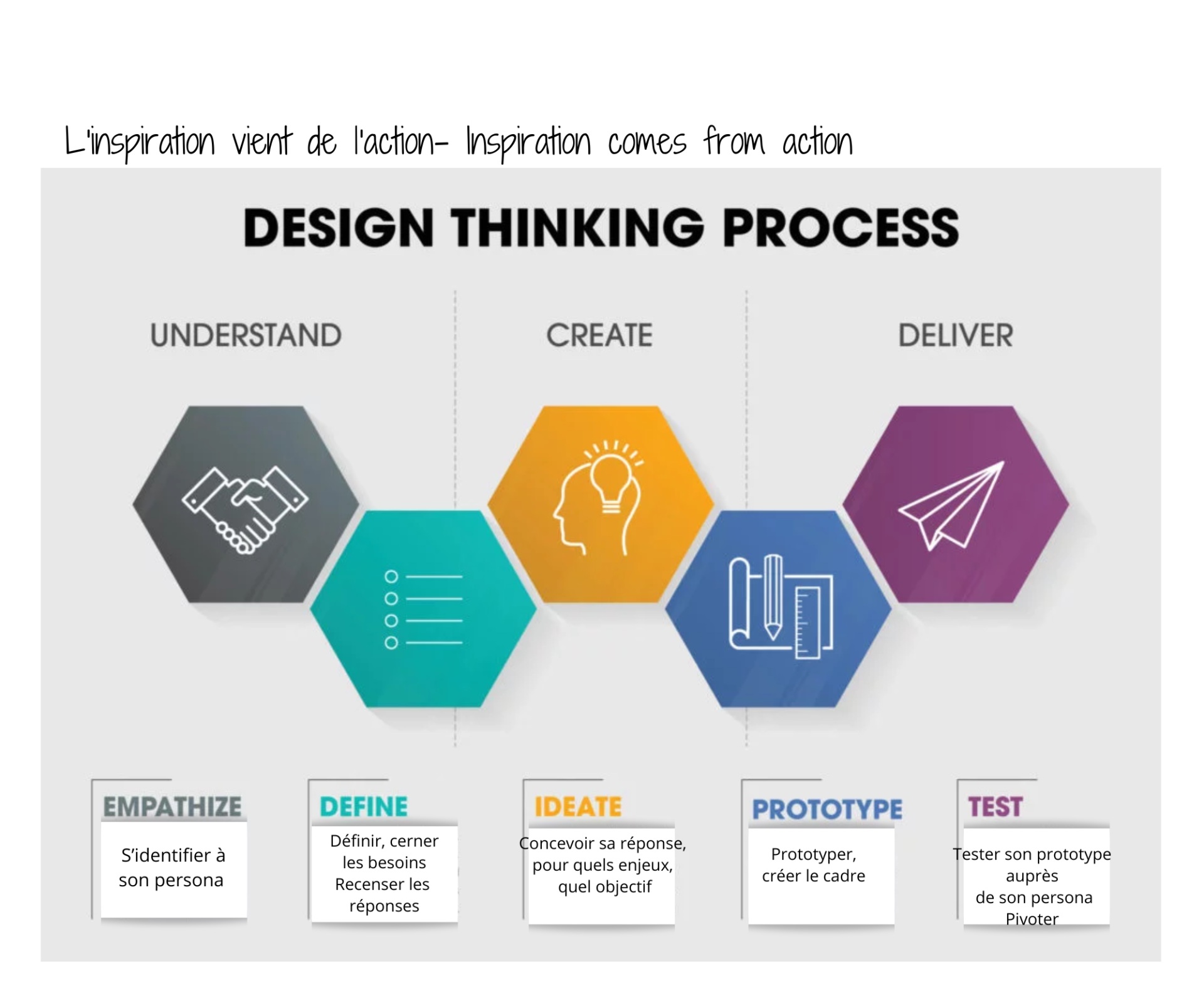Over time, has design thinking become the art of modeling thinking? Creative thinking invades businesses, giving birth to marketing. Creative thinking goes through often linear processes that we often find under the name of design thinking.
Our ability to create and innovate follows a design, a modeling imagined for us, inviting each member of a team to consider several ideas at the same time. Yet, creative thinking is very much present in all of us.
Creative ideas : definition
Creativity being associated with the innate ability to paint, sing, write, create spontaneously, processes are born over time to help each of us imagine something new.
It is a way of helping us to think outside the box.
In fact the idea in these processes would come from the context, from the solicitations of our mind to find solutions to solve a problem …
In 1926, The ART of Thought de Graham Wallas, offers a 4-step creative thought process:
1- Preparation : this is the analysis of the context, where the problem has been identified and that our analytical mind seeks to solve it in all directions
2- Incubation : the mind puts the problem aside. Thought is no longer conscious
3- Illumination : emergence of the luminous idea
4- Checking : does the luminous idea confronted with the initial problem solve the problem?
Evolution of creative thinking over time
This linear thinking, from the 1950s to the mid 1990s, oscillates between:
1-brainstorming techniques: how in a team to generate innovative ideas by applying a structured questioning methodology in order to solve a problem,
2- Visual thinking, which is a visualization technique introduced by Robert McKim in 7 steps to go from the idea, to the analysis then to the product.
This approach will be made famous when Tim Brown and David Kelley, founders of IDEO, explain their business successes by communicating this innovative approach used to solve the customer problems they encountered.
3- Design sprint : Google will bring this method into the 21st century by adding the notion of time-constrained experimentation. The concept of rapid prototyping was born
Steps of design thinking
Design thinking is a multi-step process, the number of which varies depending on the authors. It will pass over time from 7 to 5 stages
- McKim4 : define, research, imagine, prototype, select, implement, learn
- reduced to five by Jeremy Gutsche of the Trendhunter site: define, imagine, synthesize, prototype, test5
- to three by Tim Brown, the boss of the company IDEO: inspiration, imagination, implementation 6
- Google imposes a time constraint to reduce the risks and uncertainties associated with innovation. In 5 days, the team is invited to generate a rapid prototyping in 5 steps

How is the method effective?
At Google, design thinking is foster the culture of innovation.
Design thinking is a problem-solving approach that encourages creativity, innovation, and empathy. By putting the user at the center of the design process, teams can gain a deeper understanding of their needs and create solutions that meet those needs in a more effective and efficient way.
Design thinking is not just limited to product or service design but can also be applied to a wide range of challenges, including business strategy, organizational change, and even social issues. It helps teams to generate and test ideas collaboratively, iterating and refining until they arrive at a solution that truly meets the user’s needs.
Design thinking also fosters a culture of innovation by encouraging experimentation and risk-taking. It enables teams to approach challenges with an open mind and without preconceptions, allowing for breakthrough ideas to emerge. Overall, design thinking is a powerful tool for organizations looking to drive innovation and create meaningful impact.
Other creative techniques
Here are some techniques for turning your idea into great ideas. Creativity is a daily exercise. The techniques are means available to you to acquire experiences and training.
The more you stimulate your creativity, the more creative your thoughts will be.
On the blog creately.com, you will find 8 creative techniques inviting you to experience these processes.
Each of us has an ability to generate creative ideas. Often we let them slip away, practice spontaneous writing as a natural catalyst that we all have at our disposal.

